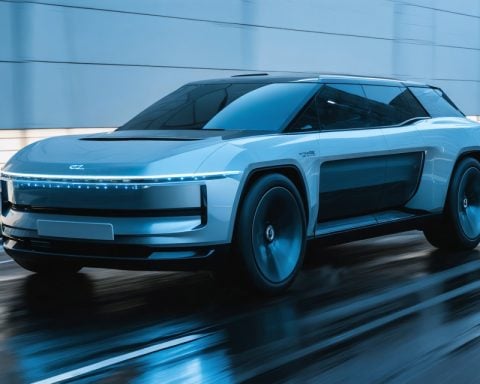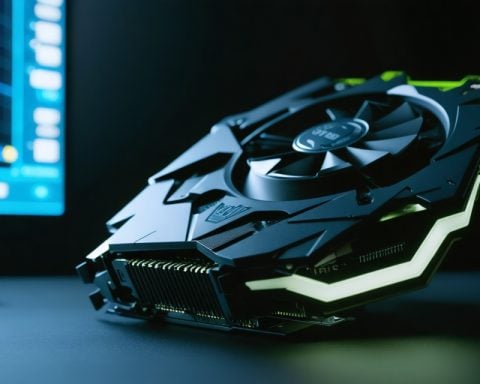- Rivian faces a challenging environment as competition in the electric vehicle market intensifies.
- Analysts have downgraded Rivian’s stock amid uncertainties, affecting its market position.
- A partnership with Volkswagen complicates earnings forecasts and financial outlook for 2025.
- Rivian’s R2 vehicle launch is slower than anticipated due to increased market competition.
- Although celebrating its first gross quarterly profit, Rivian remains far from overall profitability.
- Projecting modest future gains but lower sales amidst economic uncertainties.
- Potential risk from policy changes under Trump’s administration could affect crucial financial incentives.
- Rapid innovation and agility are vital for success in the evolving automotive landscape.
Rivian Automotive finds itself steering into a challenging landscape as market dynamics shift and competition intensifies in the electric vehicle arena. Recent assessments from analysts paint a tumultuous picture, as Rivian sees its stock downgraded amidst swirling uncertainties.
Bold moves once marked Rivian as a shining star among EV startups, yet the skies have darkened with analyst insights revealing potential pitfalls. Notably, a major financial institution adjusted its outlook for the company, citing softer projections for 2025 and complicated earnings due to its partnership with Volkswagen. This strategic alliance, while promising innovation, casts a shadow over Rivian’s near-term financial clarity.
Imagine a road thronged with sleek, new SUVs and crossovers set to emerge in the next couple of years. Rivian faces increasing traffic on this path, slowing its once promising acceleration. Competing for attention in a crowded arena, the company’s R2 vehicle edges forward at a slower-than-desired pace.
Despite exceeding Wall Street earnings and celebrating its first gross quarterly profit, the finish line of overall profitability remains distant. The company foresees more modest gains but lower sales in the coming years, entangling its future in a web of economic uncertainties.
Policy winds also threaten Rivian’s journey, as shifting governmental stances under Donald Trump’s administration could potentially disrupt incentives and financial supports crucial for innovation. A key loan from the Department of Energy hangs in the balance.
As Rivian navigates this intricate course, its journey highlights the relentless pace and competitive nature of the EV market. The takeaway: rapid innovation and adaptation are more crucial than ever in the shifting automotive landscape.
Why Rivian Faces Steep Challenges: A Deep Dive into the EV Startup’s Future
Overview
Rivian Automotive, once heralded as a leader in the electric vehicle (EV) space, now maneuvers through a landscape marked by heightened competition and economic uncertainty. Key challenges include stock downgrades, partnership complexities, policy shifts, and increasing market competition. Despite some recent successes, Rivian’s journey underscores the perils and pressures of the EV industry.
Real-World Use Cases
Rivian’s electric vehicles, particularly the R1T electric truck and R1S SUV, are designed to tap into the burgeoning demand for green, off-road-capable vehicles. These models are aimed at adventure enthusiasts looking for sustainable yet rugged travel options. Their vehicles have gained popularity for offering a blend of utility and sustainability, making them suitable for both urban commuting and adventurous getaways.
Market Forecasts & Industry Trends
The EV market is projected to grow significantly over the next decade, with continuous shifts toward sustainability and environmental responsibility. According to analysts, global EV sales could surpass 30% of all vehicle sales by 2030. This burgeoning market presents opportunities for Rivian, but the company must also contend with established automakers like Tesla, Ford, and GM, which intensify the competitive climate.
Controversies & Limitations
Rivian’s partnership with Volkswagen has been scrutinized for potentially clouding the company’s financial projections. Collaborations in technology can bring innovation, but they also introduce complexities in revenue sharing and resource allocation. Furthermore, shifting governmental policies, particularly during the Trump administration, have threatened key financial supports and tax incentives vital for EV manufacturers.
Features, Specs & Pricing
Rivian’s R1T and R1S come equipped with features like four motor drive, adaptive air suspension, and a range of over 300 miles. The R1T starts at around $73,000, while the R1S is priced slightly higher. These prices align with the premium off-road market segment, positioning Rivian as a high-end alternative to conventional SUVs and trucks.
Security & Sustainability
Rivian places a strong emphasis on sustainability, using recycled materials in vehicle construction and pledging to carbon-neutral operations by 2028. Security features include advanced driver-assistance systems (ADAS) and over-the-air software updates to bolster vehicle safety and performance continually.
Pros & Cons Overview
Pros:
– High-performing off-road capabilities
– Strong sustainability focus
– Advanced tech features
Cons:
– Premium pricing may limit accessibility
– Intense competition from established automakers
– Financial uncertainties due to market fluctuations and governmental policy shifts
Insights & Predictions
Rivian is expected to focus on scaling production and strengthening its market presence. The company’s financial health will depend significantly on its ability to boost sales while controlling costs and navigating regulatory landscapes. Analysts predict that technological innovation and strategic agility will be crucial for Rivian to capitalize on EV market trends.
Actionable Recommendations and Quick Tips
– For Investors: Monitor policy changes and competitive announcements closely, as these can dramatically impact stock performance and strategic outlook.
– For Consumers: Consider the long-term savings on fuel and maintenance when weighing Rivian’s premium pricing against competitors.
– For Rivian: Prioritize innovation and agility in strategic planning to guard against market volatility and capitalize on emerging trends.
For additional industry insights, visit the main websites of Rivian and explore related articles on Bloomberg.



















